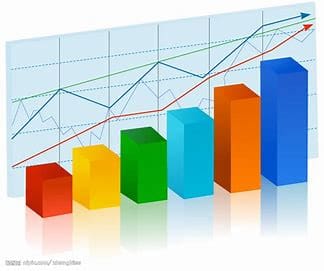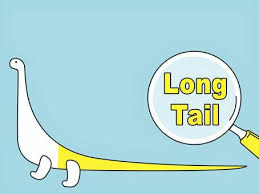This page summarizes statistical information released by the government. For more detailed information, please refer to the e-Stat (e-Stat) or the statistical data released by each ministry and agency.
Overview of the National Survey on Understanding Loneliness and Social Isolation (Basic Survey on People’s Connections)
Survey Objectives
The purpose of this survey is to shed light on the actual state of loneliness and isolation in Japan and gather fundamental information on the policies and measures related governmental ministries and agencies are carrying out. This survey is conducted as a general statistical survey based on the Statistics Act (Law No. 53 of 2007).
Survey Participants
The survey targets residents aged 16 and older nationwide, including 20,000 individuals randomly selected through the use of the Basic Resident Register.
Survey Contents
Points concerning Loneliness:
- Assessment of loneliness (based on the UCLA Loneliness Scale or direct questions)
- Duration of loneliness
- Past life events that are considered to have influenced feelings of loneliness
Points concerning Isolation:
- Methods and frequency of communication with family and friends
- Participation in social activities
- Receipt of support from government agencies and NGOs
- Awareness of supporting others
- Other relevant points
Additional Points:
- Frequency and purpose of going out
- Range of activities
- Existence of daily life worries and concerns, and their nature
- Existence of someone to confide worries and concerns in and the nature of those concerns
- Emotional responses to worries and concerns
- Physical and mental health status
- Current life satisfaction
- Changes in communication and lifestyle due to the impact of the COVID-19 virus
Points Related to Demographics
- Age
- Gender
- Marital status
- Household composition and number of residents
- Educational and employment status
- Type of residence
- Annual household income
- Economic living conditions
Aggregate Data
In terms of the aggregate data in this survey:
- Gender: In the Basic Survey on People’s Connections, the male-female ratio is 5,179 (26.2%) for males and 5,936 (52.9%) for females.
| whole | men | female | other | answer |
| 11218 | 5179 | 5936 | 71 | 32 |
| 100.0 | 46.2 | 52.9 | 0.6 | 0.3 |
age
The age percentages in the basic survey on people’s connections are as follows. The largest age group was 70~79 years old (18.8%).
| whole | 16~19years old | 20~29years old | 30~39years old | 40~49years old | 50~59years old | 60~69years old | 70~79years old | 80years old以上 |
| 11218 | 324 | 890 | 1233 | 1732 | 1905 | 1912 | 2110 | 1110 |
| 100.0 | 2.9 | 7.9 | 11.0 | 15.4 | 17.0 | 17.1 | 18.8 | 9.9 |
Percentage of People Experiencing Loneliness
When focusing on the categories of “often/always” and “sometimes” regarding the extent of loneliness, we can observe the following about the state of loneliness in the years of Reiwa 4 (2022) and Reiwa 3 (2021).
From the data on the degree of loneliness, in Reiwa 4, there was a 4.9% proportion in the “often/always” category and a 15.8% proportion in the “sometimes” category. In contrast, in Reiwa 3, the same categories had 4.5% for “often/always” and 14.5% for “sometimes.” Consequently, there is a slight increase in the proportions of “often/always” and “sometimes” between Reiwa 4 and Reiwa 3.
The effective response rates for the survey were 56.1% in Reiwa 4 and 56.6% in Reiwa 3.
Loneliness situation (table)
| often・always | sometimes | occationally | hardly | other | no answer | |
| reiwa 4 years(n=11218) | 4.9 | 15.8 | 19.6 | 40.6 | 18.4 | 0.6 |
| reiwa 3 years(n=11867) | 4.5 | 14.5 | 17.4 | 38.9 | 23.7 | 0.9 |
Loneliness Scores Based on the UCLA Loneliness Scale
The following data summarizes loneliness scores, prioritizing the higher scores.
Based on the evaluation of loneliness scores, the categories indicating high levels of loneliness for both Reiwa 4 (2022) and Reiwa 3 (2021) are as follows:
7-9 points (sometimes): Reiwa 4: 41.6% Reiwa 3: 37.1%
4-6 points (rarely): Reiwa 4: 37.0% Reiwa 3: 37.4%
10-12 points (always): Reiwa 4: 7.1% Reiwa 3: 6.3%
1-3 points (never): Reiwa 4: 13.5% Reiwa 3: 18.5%
Comparing the two years, there is a slight change in the distribution of loneliness scores. The effective response rates were 56.1% in Reiwa 4 and 56.6% in Reiwa 3.
Loneliness Score Percentage (Table)
| 10~12points (always) | 7~9points (sometimes) | 4~6points (hardly) | 3points~1points (never) | no answer | |
| reiwa 4 years | 7.1 | 41.6 | 37.0 | 13.5 | 0.9 |
| raiwa 3 years | 6.3 | 37.1 | 37.4 | 18.5 | 0.7 |
Percentage of People Feeling Lonely by Age Group

Overall, the percentage of people who answered “often/always” when asked about their loneliness is 4.9%. However, when broken down by age groups, the following variations are observed:
Younger age group (16-19 years): “often/always” is 5.2%, while “sometimes” is 17.3%, indicating a tendency to occasionally feel lonely.
Ages 20-29: “often/always” is 7.1%, and “sometimes” is 19.9%, showing a slight increase in loneliness.
Ages 30-39: “often/always” is 7.2%, and “sometimes” is 19.2%, with a slight increase.
Ages 40-49: “often/always” is 5.9%, and “sometimes” is 17.7%, indicating a slightly lower percentage.
Ages 50 and above: As age increases, the percentage of “often/always” decreases, while the percentage of “sometimes” increases.
Thus, there is a trend where the sense of “often/always” loneliness decreases with age, and the sense of “sometimes” loneliness increases. This trend suggests that the frequency of feeling lonely tends to decrease, especially in older age groups.
Loneliness Scores by Age Group:
- 16-19 years: Often/Always – 5.6%, Sometimes – 38.9%
- 20-29 years: Often/Always – 10.2%, Sometimes – 42.7%
- 30-39 years: Often/Always – 9.8%, Sometimes – 48.3%
- 40-49 years: Often/Always – 8.8%, Sometimes – 48.1%
- 50-59 years: Often/Always – 8.5%, Sometimes – 46.2%
- 60-69 years: Often/Always – 5.6%, Sometimes – 39.1%
- 70-79 years: Often/Always – 4.9%, Sometimes – 34.0%
- 80 years and above: Often/Always – 4.1%, Sometimes – 34.8%
As age increases, the percentage of those who often/always feel lonely decreases, while the percentage of those who sometimes feel lonely increases. This trend is especially pronounced in the older age groups, suggesting that occasional loneliness becomes more prevalent with age.
| respondents(n) | 10~12points(always) | 7~9points(sometimes) | 4~6points(hardly) | 3points(never) | no answer | |
|---|---|---|---|---|---|---|
| 全 体 | 100.0 | 7.1 | 41.6 | 37.0 | 13.5 | 0.9 |
| 16~19years old | 100.0 | 5.6 | 38.9 | 34.3 | 21.0 | 0.3 |
| 20~29years old | 100.0 | 10.2 | 42.7 | 34.0 | 12.9 | 0.1 |
| 30~39years old | 100.0 | 9.8 | 48.3 | 30.3 | 11.0 | 0.6 |
| 40~49years old | 100.0 | 8.8 | 48.1 | 31.1 | 11.7 | 0.3 |
| 50~59years old | 100.0 | 8.5 | 46.2 | 33.1 | 11.9 | 0.4 |
| 60~69years old | 100.0 | 5.6 | 39.1 | 41.9 | 13.0 | 0.4 |
| 70~79years old | 100.0 | 4.9 | 34.0 | 43.1 | 16.4 | 1.5 |
| 80years old以上 | 100.0 | 4.1 | 34.8 | 43.1 | 14.9 | 3.2 |
| (reposted)20~64years old | 100.0 | 8.6 | 46.0 | 33.2 | 11.8 | 0.3 |
| (reposted)65~74years old | 100.0 | 5.6 | 35.1 | 42.8 | 15.6 | 0.8 |
| (reposted)75years old以上 | 100.0 | 4.0 | 34.3 | 43.5 | 15.4 | 2.8 |
Loneliness by Gender and Age Group:
For Men:
- Overall, the percentage of men who often/always feel lonely is 5.1%, while the percentage who sometimes feel lonely is 15.7%.
- When looking at different age groups, men aged 20-29 have a higher rate of often/always feeling lonely at 6.7% and sometimes feeling lonely at 16.8%. In contrast, men aged 80 and above have a lower rate of often/always feeling lonely at 1.9% and sometimes feeling lonely at 13.3%.
For Women:
- Overall, the percentage of women who often/always feel lonely is 4.6%, and the percentage who sometimes feel lonely is 15.9%.
- Women aged 20-29 have a significantly higher rate of often/always feeling lonely at 7.1% and sometimes feeling lonely at 22.3%. On the other hand, women aged 70-79 have a lower rate of often/always feeling lonely at 2.0% and sometimes feeling lonely at 10.0%.
These findings suggest that the experience of often/always and sometimes feeling lonely varies by age and gender, particularly with distinct experiences in younger and older age groups.
| age | often・always | sometimes | occationally | hardly | never | no answer |
|---|---|---|---|---|---|---|
| male | 5.1 | 15.7 | 18.8 | 41.1 | 18.6 | 0.7 |
| male/16~19years old | 3.1 | 18.1 | 11.9 | 33.8 | 33.1 | – |
| male/20~29years old | 6.7 | 16.8 | 20.9 | 33.9 | 21.7 | – |
| male/30~39years old | 6.8 | 17.5 | 19.3 | 37.4 | 19.0 | – |
| male/40~49years old | 5.9 | 17.6 | 21.1 | 39.5 | 15.7 | 0.1 |
| male/50~59years old | 7.3 | 18.6 | 21.7 | 36.9 | 15.3 | 0.1 |
| male/60~69years old | 4.3 | 14.3 | 18.4 | 44.8 | 18.0 | 0.2 |
| male/70~79years old | 3.5 | 12.1 | 15.8 | 45.8 | 20.9 | 1.8 |
| male/80years old以上 | 1.9 | 13.3 | 16.6 | 47.6 | 18.2 | 2.5 |
| male/(reposted)20~64years old | 6.6 | 17.4 | 21.0 | 37.9 | 17.1 | 0.1 |
| male/(reposted)65~74years old | 3.8 | 12.7 | 16.4 | 46.6 | 20.0 | 0.6 |
| male/(reposted)75years old以上 | 2.1 | 13.2 | 15.6 | 46.9 | 19.4 | 2.8 |
| age | often・always | sometimes | occationally | hardly | never | no answer |
|---|---|---|---|---|---|---|
| female | 4.6 | 15.9 | 20.3 | 40.3 | 18.3 | 0.5 |
| female/16~19years old | 5.1 | 17.1 | 18.4 | 34.8 | 24.7 | – |
| female/20~29years old | 7.1 | 22.3 | 20.9 | 29.8 | 19.9 | – |
| female/30~39years old | 7.9 | 20.1 | 19.2 | 33.2 | 19.5 | 0.2 |
| female/40~49years old | 5.9 | 17.8 | 20.4 | 37.3 | 18.5 | 0.1 |
| female/50~59years old | 5.1 | 16.3 | 22.9 | 40.2 | 15.2 | 0.2 |
| female/60~69years old | 3.5 | 13.9 | 21.2 | 43.6 | 17.6 | 0.3 |
| female/70~79years old | 2.0 | 10.0 | 19.3 | 48.3 | 19.1 | 1.2 |
| female/80years old以上 | 2.6 | 16.1 | 17.8 | 42.8 | 18.8 | 1.9 |
| female/(reposted)20~64years old | 5.9 | 18.1 | 21.0 | 36.9 | 18.0 | 0.1 |
| female/(reposted)65~74years old | 2.8 | 10.7 | 19.5 | 47.7 | 18.5 | 0.7 |
| female/(reposted)75years old以上 | 2.1 | 13.8 | 19.3 | 44.5 | 18.5 | 1.8 |
Loneliness scores by gender, age group
If we focus on the feeling of loneliness in men and women, we get:
For men, the overall percentage of “often/always” is 7.8%, and the percentage of “sometimes” is 42.7%. By age, the sense of “often/always” increased to 20.29% and 8.8% among men aged 47~0, and 80.3% of men aged 9 years or older had a sense of “often/always” and 37.3% had a sense of “sometimes”.
For women, the overall percentage of “often/always” is 6.4%, and the percentage of “sometimes” is 40.7%. Among women aged 20~29, the sense of “often/always” is 11.2% and the sense of “sometimes” is increasing at 39.8%, and among women over 80 years old, the sense of “often/always” is 4.2% and the sense of “sometimes” is 33.1%.
Thus, there are differences in loneliness between “often, always” and “sometimes” loneliness depending on gender and age, suggesting that loneliness tends to be more pronounced especially in men and women aged 20~29 years.
| respondents(n) | 10~12points(always) | 7~9points(sometimes) | 4~6points(hardly) | 3points(never) | no answer | |
|---|---|---|---|---|---|---|
| male | 100.0 | 7.8 | 42.7 | 35.5 | 13.3 | 0.7 |
| male/16~19years old | 100.0 | 5.6 | 36.9 | 35.0 | 22.5 | – |
| male/20~29years old | 100.0 | 8.8 | 47.0 | 29.5 | 14.7 | – |
| male/30~39years old | 100.0 | 10.4 | 45.6 | 31.6 | 11.7 | 0.7 |
| male/40~49years old | 100.0 | 9.7 | 47.8 | 31.5 | 10.6 | 0.4 |
| male/50~59years old | 100.0 | 9.6 | 47.3 | 30.1 | 12.7 | 0.2 |
| male/60~69years old | 100.0 | 6.7 | 39.9 | 40.8 | 12.1 | 0.5 |
| male/70~79years old | 100.0 | 6.2 | 37.2 | 39.5 | 15.9 | 1.1 |
| male/80years old以上 | 100.0 | 3.9 | 37.3 | 43.5 | 13.0 | 2.3 |
| male/(reposted)20~64years old | 100.0 | 9.3 | 46.4 | 32.1 | 11.9 | 0.3 |
| male/(reposted)65~74years old | 100.0 | 7.2 | 37.0 | 40.2 | 15.0 | 0.6 |
| male/(reposted)75years old以上 | 100.0 | 4.1 | 37.8 | 41.6 | 14.3 | 2.1 |
| respondents(n) | 10~12points(always) | 7~9points(sometimes) | 4~6points(hardly) | 3points(never) | no answer | |
|---|---|---|---|---|---|---|
| female | 100.0 | 6.4 | 40.7 | 38.2 | 13.7 | 1.0 |
| female/16~19years old | 100.0 | 4.4 | 41.1 | 33.5 | 20.3 | 0.6 |
| female/20~29years old | 100.0 | 11.2 | 39.8 | 37.7 | 11.2 | 0.2 |
| female/30~39years old | 100.0 | 9.1 | 50.2 | 29.5 | 10.9 | 0.5 |
| female/40~49years old | 100.0 | 7.9 | 48.5 | 30.6 | 12.7 | 0.2 |
| female/50~59years old | 100.0 | 7.2 | 44.9 | 36.2 | 11.2 | 0.5 |
| female/60~69years old | 100.0 | 4.5 | 38.5 | 42.8 | 14.0 | 0.3 |
| female/70~79years old | 100.0 | 3.6 | 31.4 | 46.2 | 16.9 | 1.9 |
| female/80years old以上 | 100.0 | 4.2 | 33.1 | 42.8 | 16.2 | 3.7 |
| female/(reposted)20~64years old | 100.0 | 7.9 | 45.7 | 34.2 | 11.8 | 0.3 |
| female/(reposted)65~74years old | 100.0 | 4.1 | 33.5 | 45.3 | 16.2 | 0.9 |
| female/(reposted)75years old以上 | 100.0 | 3.7 | 31.7 | 45.0 | 16.3 | 3.3 |
Hypotheses and Data Verification Regarding Loneliness

Causes of Loneliness in Contemporary Japan
In modern Japan, feelings of loneliness have become a significant social issue, often linked to factors like suicide and events among students and young people, as well as the phenomenon of elderly individuals dying alone. To explore this further, we will set up and examine three hypotheses for the factors that may contribute to loneliness in Japan and compare these hypotheses with the statistical results summarized above.
Hypotheses on the Causes of Loneliness in Japan:
- Aging Population
- Urbanization
- **Proliferation of Digital Technology
- Aging Population: It is assumed that the aging population has led to weakened family and friend relationships.
- Urbanization: Urbanization, which has led to increased solo living and the proliferation of nuclear families due to job relocations, has created environments with weaker interpersonal relationships, impacting loneliness.
- Proliferation of Digital Technology: The advancement of digital technology, particularly the increased use of social media and the internet for communication, may have led to more virtual interactions but decreased opportunities for deep real-life relationships.
Upon examining the age-specific survey data mentioned above, we find that the age groups where men are most likely to experience loneliness are in their 30s, while for women, it’s in their 50s. Conversely, the age groups with the lowest reported levels of loneliness are men aged 80 and above and women in their 70s. This suggests that the impact of Japan’s aging population may not be as pronounced as expected. Further investigations and insights related to urbanization and digital technology are needed and should be explored on another occasion.




